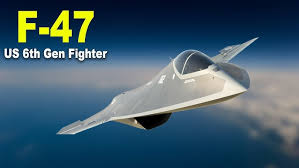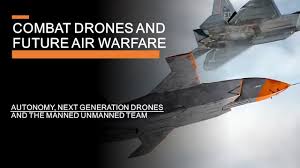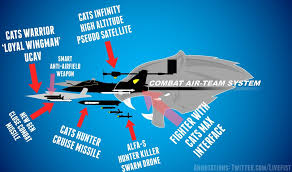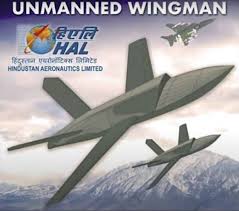My Article was published in the May edition of the “Life of Soldier” journal.
The evolution of military aviation has reached a revolutionary moment with the advent of sixth-generation fighter jets. These jets, representing a transformative leap in military aviation, are set to redefine air combat with their revolutionary technologies like advanced stealth, artificial intelligence (AI), hypersonic speeds, and networked warfare capabilities. As nations like the United States and China race to develop these next-generation platforms, the global balance of power is shifting, with significant implications for countries like India. This article explores what constitutes a sixth-generation fighter, delves into the specifics of the US’s Next Generation Air Dominance (NGAD) platform, compares it to the existing F-22, and assesses its potential to transform US defence. It also examines the intensifying US-China defence rivalry and India’s current standing amidst these global developments.
Sixth-Generation Fighter Jet
A sixth-generation fighter jet is the next evolutionary step beyond the current fifth-generation aircraft, such as the U.S.’s F-22 Raptor and F-35 Lightning II, the Russian SU-57 and the Chinese J-20. While fifth-generation jets introduced advanced stealth, supercruise (sustained supersonic flight without afterburners), and integrated sensor systems, sixth-generation fighters aim to push the boundaries further. Their defining features include:-
Enhanced Stealth. These jets will have an even lower radar cross-section than their predecessors, using advanced materials, coatings, and aerodynamic designs to become nearly invisible to enemy detection systems.
Artificial Intelligence (AI). AI will be deeply integrated, enabling real-time decision-making, autonomous operations, and coordination with unmanned systems, such as drones acting as “loyal wingmen.”
Hypersonic Speeds. Capable of exceeding Mach 5, these aircraft could drastically reduce response times and enhance their ability to penetrate contested airspace.
Directed-Energy Weapons. Innovations like laser systems could provide precise, cost-effective means to neutralise threats like missiles or enemy aircraft.
Advanced Networking. Sixth-generation jets will operate as nodes in a vast battlefield network, sharing data with satellites, ground stations, and other platforms to achieve total situational awareness.
Advanced Avionics and Sensors. They would incorporate superior sensor fusion for unparalleled situational awareness.
Optionally Manned Capabilities. These fighters will be flexible enough to operate with or without a pilot, adapting to mission requirements.
These capabilities mark a shift from traditional air combat to multi-domain warfare, a concept in which air, space, cyber, and electronic domains are seamlessly integrated. This integration allows for a more comprehensive approach to warfare, focusing on dominating future conflicts through technological superiority and adaptability.
Speciality of the U.S.’s “F-47” Fighter Jets & Differences from the Existing F-22.
The F-22 Raptor, operational since 2005, is a fifth-generation stealth air superiority fighter renowned for its agility, stealth, and advanced avionics. However, after two decades, it faces limitations in an evolving threat era. The NGAD is envisioned as a “family of systems” rather than a single aircraft, comprising a manned fighter and supporting unmanned drones. It will differ significantly. The NGAD (F-47) fighter’s specialities would include:-
Next-Level Stealth. The F-22’s stealth is exceptional, but the NGAD will likely use next-generation materials and designs to achieve even greater invisibility, including against emerging radar technologies. Building on the F-22’s stealth technology, the NGAD will likely incorporate broadband stealth, reducing detectability across a broader range of radar frequencies.
AI and Autonomy. The F-22 relies on human pilots for all decisions, whereas the NGAD will integrate AI to handle complex tasks, potentially reducing pilot workload or enabling autonomous missions. The jet may feature AI systems that manage flight, combat, and coordination with unmanned drones, potentially allowing for unmanned variants.
Hypersonic Capability. The F-22 can supercruise at Mach 1.5, but the NGAD may reach hypersonic speeds (Mach 5+), vastly improving its ability to strike and evade. While specifics are classified, the NGAD could achieve speeds far exceeding the F-22’s Mach 1.5 supercruise, possibly entering the hypersonic realm.
System Integration. The F-22 has limited data-sharing capabilities compared to the NGAD, which will operate within a highly networked environment, linking with other assets for real-time battlefield awareness. The NGAD is not just a standalone aircraft but part of a broader “family of systems,” including drones, advanced sensors, and cyber tools, all working together to dominate the battlespace. The NGAD could control or be supported by unmanned drones, expanding its operational flexibility.
Range, Endurance and Payload. The F-22 has a range of approximately 1,850 miles with external tanks, whereas NGAD is engineered for greater range, endurance and potentially larger weapon capacity. It will be designed for long-range missions critical for operations in expansive regions like the Indo-Pacific.
Flexible Architecture. Its modular design could enable rapid upgrades and mission-specific configurations, ensuring longevity and adaptability. The NGAD is a forward-looking platform designed for future warfare, while the F-22, though formidable, reflects the priorities of an earlier era. These features position the NGAD as a revolutionary platform designed to address the challenges of modern warfare against technologically advanced adversaries.
Likely Game Changer for U.S. Defence
The Next-Generation Air Dominance (NGAD) program can redefine U.S. defence strategy, ushering in a new era of air superiority, enhanced deterrence, and reinforced multi-domain integration. The anticipation and excitement surrounding this potential transformation are palpable.
Air Superiority. The NGAD is designed to outperform near-peer adversaries like China’s J-20 and Russia’s Su-57. Its cutting-edge stealth, enhanced range, and AI-driven capabilities will allow the U.S. to dominate contested airspaces, even in heavily defended environments.
Deterrence. A formidable leap in air combat technology, the NGAD will discourage potential adversaries from challenging U.S. air dominance. Knowing they face a next-generation fighter capable of overwhelming their defences, adversaries may be deterred from aggressive actions.
Multi-Domain Dominance. The NGAD is not just a fighter but a networked system that integrates with space, cyber, and land-based forces. This interconnectivity allows it to act as a force multiplier, relaying battlefield intelligence and coordinating attacks with other assets, thus extending its impact far beyond traditional air combat.
Air Dominance. Successfully fielding the NGAD will ensure U.S. air dominance and reaffirm the nation’s position as the global leader in military innovation. Its advancements in AI, unmanned teaming, and next-gen propulsion could have spillover benefits for civilian aerospace, cyber warfare, and autonomous systems, instilling a sense of pride and confidence in the audience.
Despite its promise, the NGAD faces significant hurdles, including a projected per-unit cost of hundreds of millions of dollars and the challenge of integrating multiple breakthrough technologies. However, if these obstacles are overcome, the NGAD will shape the future of U.S. airpower for decades, ensuring its dominance in a rapidly evolving strategic landscape.
China’s Sixth-Generation Stealth Fighter and U.S.-China Competition.
China is also advancing its sixth-generation stealth fighter, with reports of prototypes being sighted. China’s program remains shrouded in secrecy, and the details are limited. The recent flying of sixth-generation prototypes suggests it is committed to matching or surpassing U.S. capabilities. This development coincides with the U.S. Pentagon’s NGAD efforts, highlighting fierce competition between these two powers.
Both nations are pouring resources into AI, hypersonics, and stealth, aiming to deploy sixth-generation fighters first and gain a strategic edge. A sixth-generation jet would enhance China’s influence in the Asia-Pacific, particularly in disputed areas like the South China Sea and near Taiwan. The U.S.-China rivalry extends beyond military hardware, shaping economic and diplomatic alignments worldwide. This competition drives rapid innovation and escalates tensions, with both nations seeking to outpace each other in defence technology. This close contest shapes global defence dynamics, influencing nations like India.
Impact on India
The US-China rivalry in sixth-generation fighters has significant implications for India, which faces opportunities and challenges. India faces threats from China and Pakistan, both of which are modernising their air forces. A Chinese sixth-generation fighter could tip the balance in regional conflicts, pressuring India to modernise its air force. India must counter Beijing’s growing military strength. India balances ties with the US and Russia while pursuing indigenous programs.
India’s airpower combines legacy and modern systems, reflecting its multi-source procurement strategy. It includes Russian Su-30MKI, MiG-29, French Mirage-2000, Rafale and indigenous Tejas fighters. The AMCA aims to deliver fifth-generation capabilities, though it’s still years from operational service. India’s fleet is smaller and comparatively less advanced, lacking operational fifth-generation fighters. It trails in AI, stealth, and hypersonic research. India is modernising through foreign purchases (Rafale), indigenous efforts (Tejas Mk2, AMCA), and partnerships with the U.S., France, and Israel. Limited resources spread across multiple programs hinder rapid progress. However, it must accelerate to keep pace with its rivals.
India’s reliance on Russian aircraft and systems risks U.S. sanctions, straining its ties with Washington despite a growing partnership. India must diversify its defence suppliers to reduce foreign dependence while boosting indigenous programs like the Advanced Medium Combat Aircraft (AMCA). The U.S.-China race underscores the urgency for India to enhance its technological and military capabilities to safeguard its interests.
India has defence deals with the U.S., but has not purchased U.S. fighter jets. Discussions about acquiring the F-35 Lightning II, a fifth-generation stealth fighter, are being speculated. The F-35 could bolster its air force, but its expense and restrictions might divert resources from the AMCA, India’s fifth-generation fighter in development. With China advancing rapidly, India cannot afford delays but needs a cost-effective, strategically aligned solution.
The NGAD, however, remains a U.S.-exclusive program, a highly classified initiative focused on developing a sixth-generation fighter for the U.S. Air Force. Its sensitive technologies and strategic importance make it unlikely to be shared with foreign partners soon.
Conclusion
As exemplified by the U.S.’s NGAD and China’s emerging platform, sixth-generation fighter jets are set to redefine air combat with unprecedented technology. For the U.S., the NGAD will ensure air dominance, while China’s efforts signal its rise as a military superpower. India, caught between these giants, faces a complex path. It lacks direct involvement with NGAD but must leverage U.S. ties, navigate CAATSA, and decide on deals like the F-35, all while pushing indigenous development.
India’s air power is at a crossroads in a world of rapid geopolitical and technological change. Modernisation is underway, but closing the gap with China will require strategic focus, investment, and innovation. The sixth-generation race is not just about jets—it’s about the future of warfare, and India must position itself to thrive in this new era.
Please Do Comment.
For regular updates, please register your email here:-
References and credits
To all the online sites and channels.
Pics Courtesy: Internet
Disclaimer:
Information and data included in the blog are for educational & non-commercial purposes only and have been carefully adapted, excerpted, or edited from reliable and accurate sources. All copyrighted material belongs to the respective owners and is provided only for wider dissemination.
References:-
- Krepinevich, Andrew. The Evolution of Air Dominance: Sixth-Generation Fighters and the Future of Air Combat. Center for Strategic and Budgetary Assessments, 2023.
- Gunzinger, Mark, and Bryan Clark. The Role of NGAD in Sustaining U.S. Air Superiority in the Pacific. Center for Strategic and International Studies, 2024.
- RAND Corporation. Next-Generation Fighter Aircraft: Strategic Considerations for the U.S. Air Force. RAND, 2023.
- Mehta, Aaron. U.S. Airpower in the Indo-Pacific: The NGAD’s Role in Detering China. Atlantic Council, 2024.
- Callaghan, John. “Sixth-Generation Fighter Jets and the Shift in U.S. Defence Strategy.” Journal of Strategic Studies 47, no. 1 (2024): 33-58.
- Holbrook, Sarah. “AI and Human-Machine Teaming in Next-Gen Fighters: Tactical Advantages and Challenges.” Air & Space Power Journal 38, no. 2 (2023): 45-70.
- Miller, James. “The Role of NGAD in Joint All-Domain Operations (JADO).” Military Review 104, no. 3 (2023): 22-41.
- Roberts, Ethan. “Geopolitical Implications of America’s Next Fighter Jet in the Indo-Pacific.” Defence and Security Analysis 40, no. 4 (2024): 90-112.
- Boeing Defence. Stealth, AI, and the Future of Sixth-Generation Fighters. Chicago, IL: Boeing Corporation, 2024.
- Northrop Grumman. Multi-Domain Warfare and NGAD: A Defence Industry Perspective. Falls Church, VA: Northrop Grumman, 2024.
- Jane’s Defence Weekly. Sixth-Generation Fighters: Key Developments and Program Milestones. London: Jane’s Information Group, 2024.
- Trevithick, Joseph. “What We Know About the U.S. Air Force’s Secret Sixth-Gen Fighter.” The War Zone (The Drive), January 18, 2024.
- Insinna, Valerie. “America’s NGAD Program and the Future of Air Superiority.” Defence News, February 7, 2024.
- Mizokami, Kyle. “The Air Force’s Future Fighter Jet: How the F-47 Will Change U.S. Airpower.” Popular Mechanics, March 5, 2024.
- Axe, David. “The Cost and Strategy Behind NGAD.” Forbes Defence, April 12, 2024.
- Thompson, Loren. The Aerospace Revolution: How Next-Generation Fighters Will Change Warfare. Washington, D.C.: Lexington Institute, 2023.




